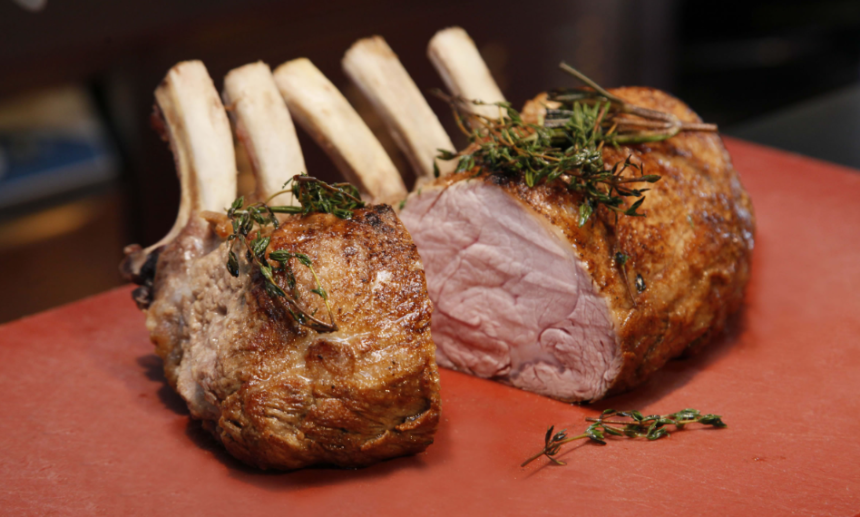Veal, a delicate and tender meat, has been a staple in cuisines around the world for centuries. Derived from young cattle, veal is known for its mild flavor, fine texture, and versatility in cooking. While it’s often regarded as a luxury ingredient in gourmet dishes, veal in Oakland offers a wide range of culinary possibilities, from hearty stews to quick sautéed meals.
In this article, we’ll delve into what veal is, how it’s raised, its different cuts, and how to prepare and cook it to perfection.
What is Veal?
Veal comes from calves, typically between the ages of 16 to 18 weeks, although the exact age can vary depending on the farming methods. The meat is known for being lighter in color compared to beef, with a pale pinkish hue and a softer texture. The tenderness of veal is due to the young age of the animal and its lack of developed muscle fibers, which gives it its fine grain.
Types of Veal
There are several cuts of veal, each suited for different cooking methods. Some of the most popular cuts include:
- Veal Chop: A bone-in cut, often grilled or pan-seared. Veal chops are tender and flavorful, making them ideal for special occasions or hearty meals.
- Veal Tenderloin: One of the most prized cuts, the tenderloin is incredibly tender and lean, perfect for roasting or grilling.
- Veal Cutlets: Thinly sliced and typically breaded or pan-fried, veal cutlets are a popular choice for quick and easy meals.
- Veal Stew Meat: Diced veal used for stews and braises, where the slow cooking method allows the meat to become meltingly tender.
- Veal Shank: A tough cut that requires slow cooking, such as braising or making osso buco, a classic Italian dish where the marrow from the bone imparts rich flavor to the dish.
How Veal is Raised
The production of veal can be a controversial topic due to the farming methods used to raise the animals. In traditional veal farming, calves are raised in confined spaces, which limits their movement to produce tender meat. However, more humane farming practices have emerged, with many producers opting for pasture-raised veal or those that follow free-range practices. These methods allow the animals to roam freely and graze, resulting in a more ethical and often more flavorful product.
When purchasing veal, it’s essential to look for certifications such as “humanely raised” or “grass-fed” to ensure the meat comes from a farm that follows ethical practices.
Nutritional Benefits of Veal
Veal is a high-quality source of protein and essential nutrients, including iron, zinc, and B-vitamins. Because it’s leaner than beef, veal is lower in fat, making it a good option for those looking to reduce their fat intake while still enjoying flavorful meat. A 3-ounce serving of veal provides approximately:
- 150-200 calories
- 23-25 grams of protein
- 5-8 grams of fat
How to Cook Veal
Veal can be cooked in many different ways, depending on the cut. Here are some popular cooking methods:
- Grilling: Veal chops and tenderloins can be grilled to achieve a deliciously smoky flavor while keeping the meat juicy and tender.
- Pan-Frying: Veal cutlets are often breaded and fried in a pan for a crispy, golden-brown exterior and a soft, tender interior.
- Braising: Tougher cuts like veal shank and stew meat benefit from slow cooking in liquid, allowing the meat to become incredibly tender.
- Roasting: A whole veal roast, such as the tenderloin, can be roasted in the oven with herbs and spices for a flavorful, succulent dish.
Popular Veal Dishes
Veal is a key ingredient in many traditional dishes around the world. Some popular veal recipes include:
- Veal Marsala: A classic Italian-American dish where veal cutlets are sautéed with mushrooms and a rich Marsala wine sauce.
- Osso Buco: A traditional Italian dish made with veal shanks braised in wine and vegetables, often served with gremolata and risotto.
- Wiener Schnitzel: A popular Austrian dish featuring veal cutlets that are breaded, fried, and served with a variety of sides like potato salad or lingonberry jam.
- Veal Piccata: Thinly sliced veal cooked in a lemony white wine sauce with capers, a bright and flavorful dish often served with pasta.
Conclusion
Veal is a versatile and flavorful meat that can elevate a wide range of dishes, from simple weeknight meals to gourmet feasts. While it has faced some ethical concerns regarding farming practices, choosing humanely raised or grass-fed veal can ensure that you are making a responsible choice while enjoying its tender texture and mild flavor. Whether grilled, roasted, or braised, veal brings a touch of luxury and refinement to any meal.






